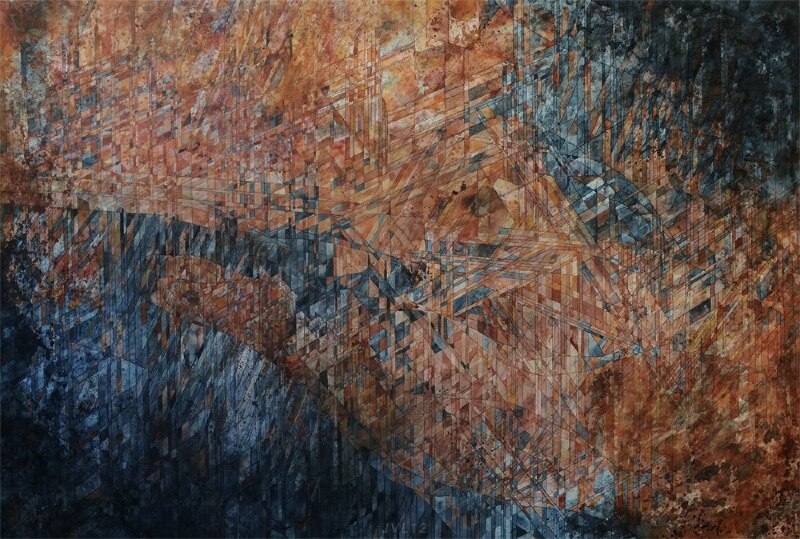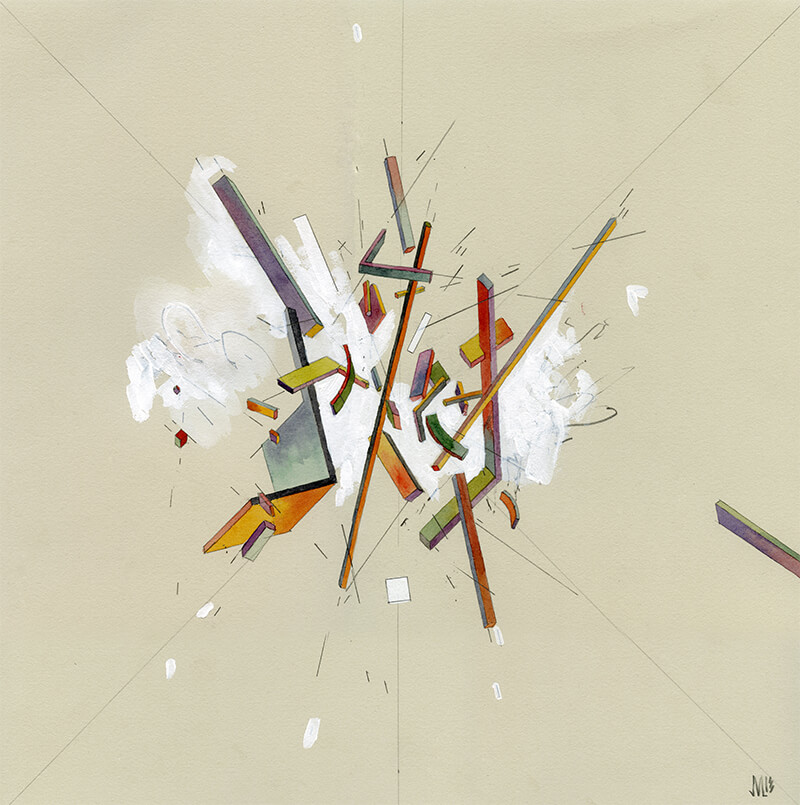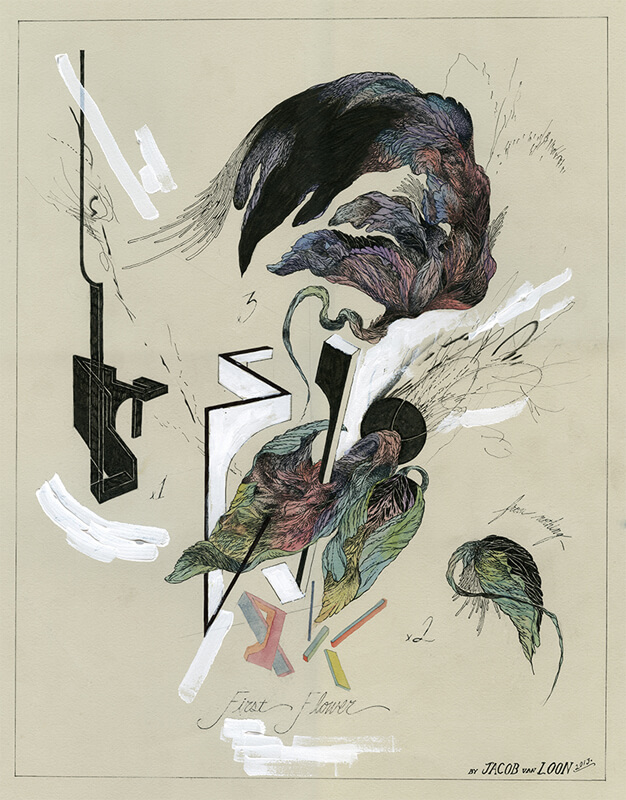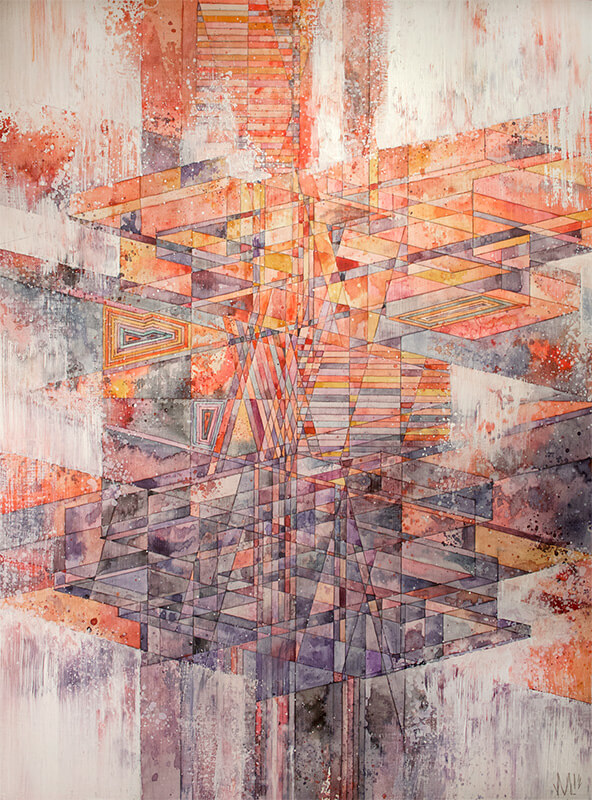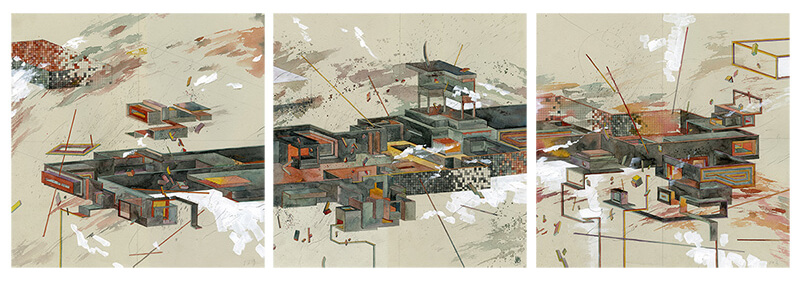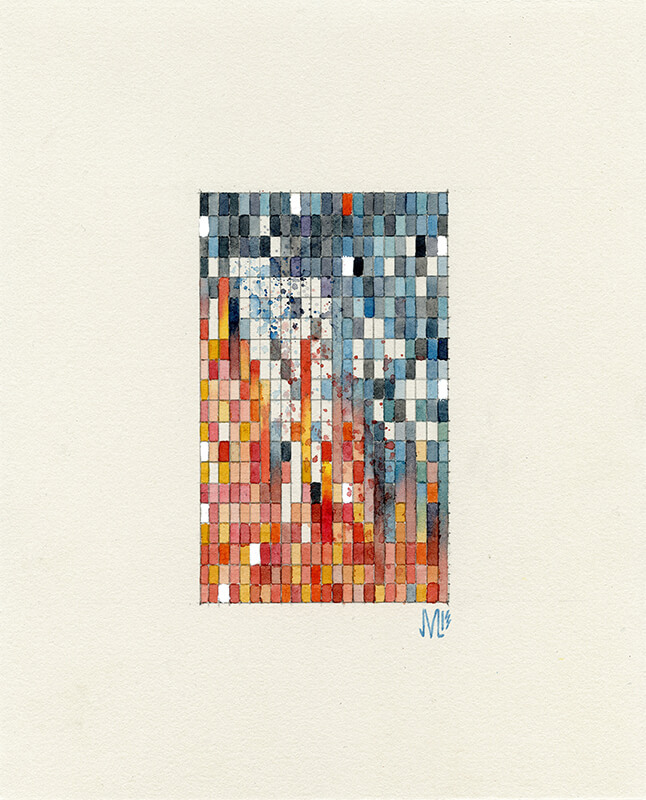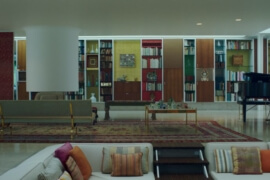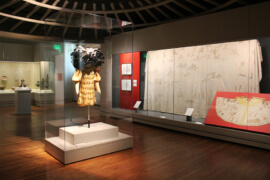When I first began this interview series, I had no idea what I was in for. I thought it could be a fun side project that would push me to connect with other creative individuals and provide a platform for the inspirational voices of others. It indeed does those things, but I couldn’t have predicted how important it would become to me, to my own journey. The opportunity to ask a question and have it genuinely answered with thought and care, is a joy I truly cherish now. To think that people I admire would generously give me their time and a piece of their mind… well, it just really humbles me and motivates me.
I can say without a doubt that this interview is one I’ve anticipated more than any other. Why is that, you ask? Well, it’s a multitude of things. Jacob Van Loon is an artist I’ve admired via tumblr for a while now; I stumbled upon his work organically and have been a fan ever since. Watch the video below and you’ll understand why I’m so enraptured. The infrastructure he builds with pencil and paint is complex and layered, existing somewhere in-between creation and destruction. I’d like to think (maybe hope is the better word) that the universe I draw within could maybe be a neighbor to his own. But enough words from me. Van Loon is the 27-year old sage here and his words are the ones I want to share with you.
[youtube=http://youtu.be/2TNW8oY-Tys]
Tell me a little bit more about your background. Where did you grow up and does it influence the work you make now?
I split the first twenty years of my life between the far suburbs of Chicago and then Milwaukee, eventually moving to Chicago after I finished school at Northern Illinois University, which is in DeKalb. For any of your local readers, DeKalb county GA and DeKalb, IL are both named after the same guy. One of those life-enriching facts you can’t believe you’ve lived this long without.
A lot of my work is based off experiences I’ve had in places all over the Midwest, and I think how critically I observe things is a quality often found in flyover artists. There’s a certain sense of awareness to tap into if you’re from this part of country. Especially in Illinois, a place notorious for its flat, monotonous landscapes (at least in the northern part). To me the coasts are kind of like a cartoon, with all the obvious and drastic motifs at a person’s disposal.
You’ve studied at a variety of schools and presumably interacted with numerous professors and colleagues. Are there any that you felt a particular kinship with?
I developed some good friendships and professional relationships with a few of my teachers over the seven years I was in school(s). They still pop into my life on occasion, less often than I’d like but it’s nice to be able to stay in touch with some of them. As a prototypical shut-in, I was surprised to come out of university with some pretty good friends too. We all took our own paths and some of them still provide me with incentive/motivation to keep my own studio production at a high rate. Still a hardcore shut-in though, sorry friends.
Your work and your writing are so mature, I find it hard to believe you’re only twenty-seven. Where did this clarity of voice come from? Is it something you worked hard at cultivating or has it always just been a part of who you are?
Coming from a family with more than one actual writer, I don’t consider myself a great writer. I’ve had good instruction though. Paying attention to what I don’t like about art criticism and art/writing has helped me structure my own opinions – which forces me to try and be as constructive as possible with my own criticisms and perceptions. Illustration and design both emphasize efficient communication, so having training in both practices is another factor in how I talk about all art. I’ve been told I’m opinionated. I’ve also been told that I’m a jerk in this regard, but I’d prefer to think those people just mean that I’m charismatically opinionated.
Your sense of color feels both archaic and futuristic. Are there specific palettes you feel more drawn to than others? How do they serve the purposes of your concepts?
I haven’t been cognizant of color palettes for very long. Until about 4 or 5 years ago I was just painting and drawing colors in approximation to how I psychologically saw them. I remember one of the first attempts I made at a palette was to characterize living and decomposing tissue. In conjunction with the architectural motif some of my work has, that’s a direct correlation to the types of places and times my pieces are linked to. I prefer to work in black and white when I can. A friend of mine gave me Audubon’s mini-elephant folio as a gift and I’ve been doing color studies from his illustrations. The practice has been stimulating and is turning into an interesting spin off, which pulls aesthetic elements from my other work.
Do all of your works speak to a specific inspiration or event? When they do, how do you go about finding these things – are they randomly stumbled upon or purposefully uncovered?
A lot of my pieces are named after a place I’ve been or a piece of history I’ve studied, but anchored to a personal experience or recollection not directly related to that original place or story. I’m attracted to certain types of stories from history, especially the types of stories where success, struggle and failure braid a narrative. It doesn’t usually take a lot of work for me to find an idea worth pursuing to completion.
Tell me what role spontaneity has in your work, if any.
My work has always been too calculated for its own good. Only in the past year have I been able to fight off the false need to control the media instead of letting the media speak for itself. It depends on if the media needs to speak for itself to begin with – which varies by piece. It’s a symptom of being a new painter, and that balance will take me some time to discover. To know why something should be painted instead of drawn or sculpted or whatever else is important but takes some time to resolve. The first issue to flesh out is whether an idea should be implemented at all. That doesn’t sound spontaneous, but there’s the spontaneity that births the realization of an idea, and there’s the spontaneity that carries a well-established concept through its fruition.
Which artists do you admire most and why?
The Constructivists, the Bauhaus, anywhere there is a merger of art and design. Artists who have multi-facted formal training and admonish process in their own work. As selective as I am, I have deep admiration for artists who successfully address the human figure in their work. Winston Chmielinski, Nicola Samorì, Arshile Gorky, Sally Mann, Kris Knight, Max Klinger, Marlene Dumas, Jenny Morgan, Vilhelm Hammershøi, Irving Penn, Alexander Tinei, too many to mention here – I think figurative art is the most challenging work to create as an artist. Not because it’s technically difficult, but because most figurative work is pointless. It’s hard enough for me to cope with art being such a selfish thing without drawing myself or another person in my work. I started cataloging some of what I find influential in figurative art at obscurantisme.tumblr.com. Not all of the pieces I post there are things I love, but all of the pieces I choose have a certain level of confrontation in them, they all avoid the consumable emotional archetypes so much figurative work is meant to fall into, especially lately.
Your work seems like it could very easily translate into textiles for various items; pillows, clothing, curtains, et cetera. Do you think that’s something you’d be interested in developing?
I’ve never licensed my work for these types of production, but wouldn’t say no to the right collaboration. I have no interest in setting out to produce textiles or other utilitarian implementations on my own. 2014 might be more about producing editions of my work, but I’ve been saying that since 2012. I need to connect with the right person to get this done – if you’re a printer and reading this, feel free to get in touch.
What does the term “struggling artist” mean to you? Do you think artists need to struggle in order to succeed?
It means about the same thing as “struggling accountant” or “struggling project manager”. Life is struggle. Artists need to do good honest work to succeed.
Do you think of your work as a business or commodity? Does that change the nature of your process?
Yes. I’ve been fortunate enough to gain clientele who trusts my work enough to be almost entirely hands-off, which allows me to make my own strides in concept and as a draftsman. I’d love more chances to design professionally, which is a different vehicle in some ways. My process isn’t changed whether or not I’m making work to sell. My work can easily take a decorative function, which some look upon critically. At this point in my career, I don’t. Treating my work with some level of learned professionalism makes certain aspects of self-promotion easier. I’ve not yet been represented by a gallery or agency, so it’s my responsibility to represent myself and my work at a level people trust enough to then become patrons of the work. That someone would want to own my work, sight unseen, and trust me to create work to fulfill a specific purpose is still a humbling experience.
What advice would you give to your 22-year-old self? How about your 45-year-old self?
22: You can do better. 45: You can do better.


